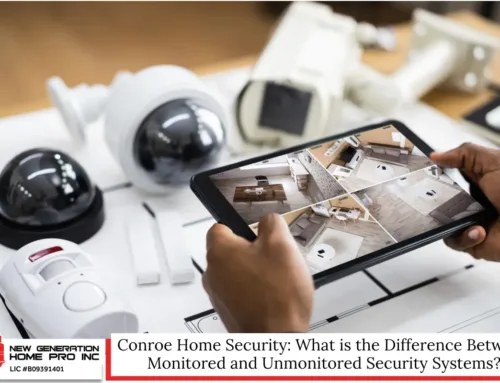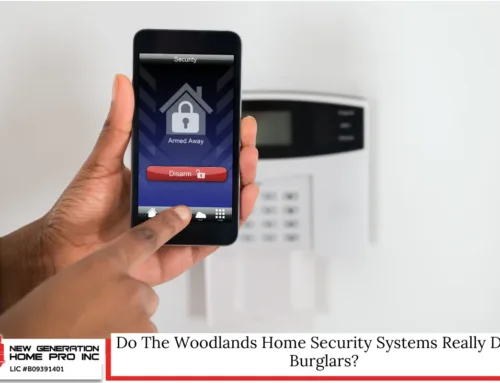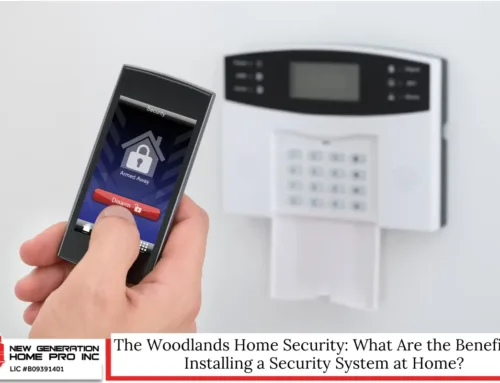Getting ready for a security system installation service can feel like a big project, but it doesn’t have to be. Whether you’re working with a security camera installer or choosing a smart home security system you can install yourself, this step by step guide will walk you through everything in simple, clear terms. These essential steps help make sure your home is ready, your equipment works perfectly, and your family feels safe. From choosing the right security systems and placing sensors to testing everything and setting up remote access, this article will give you the actionable steps to prepare your home like a pro. Let’s dive in!
Step 1: Understand Your Home’s Security Needs

Before installing anything, take a walk around your house. Check all entry points-doors, windows, garages, and even second-floor balconies. Think like someone trying to break in. Where would they go? Make a list of these areas. You’ll need to place entry sensors, window sensors, motion detectors, or even glass break sensors in those locations.
Questions to Ask:
- Do I need indoor and outdoor cameras?
- Will I need smoke sensors or carbon monoxide sensors?
- Should I get a flood sensor for my basement?
These questions help define your level of security and guide your next step.
Step 2: Choose Between DIY and Professional Installation
You have two main options: set it up yourself or hire a professional monitoring service.
DIY Security Systems
- Often come with wireless options and easy peel-and-stick sensors
- Connect to your smartphone for remote access
- Budget-friendly and flexible
Professional Installation
- A trained security camera installer handles the work
- Systems may offer backup power solutions and advanced features
- Ideal if you want a central monitoring station watching your home 24/7
Both choices can work well-it just depends on your needs and budget.
Step 3: Pick the Right Equipment for Your Home
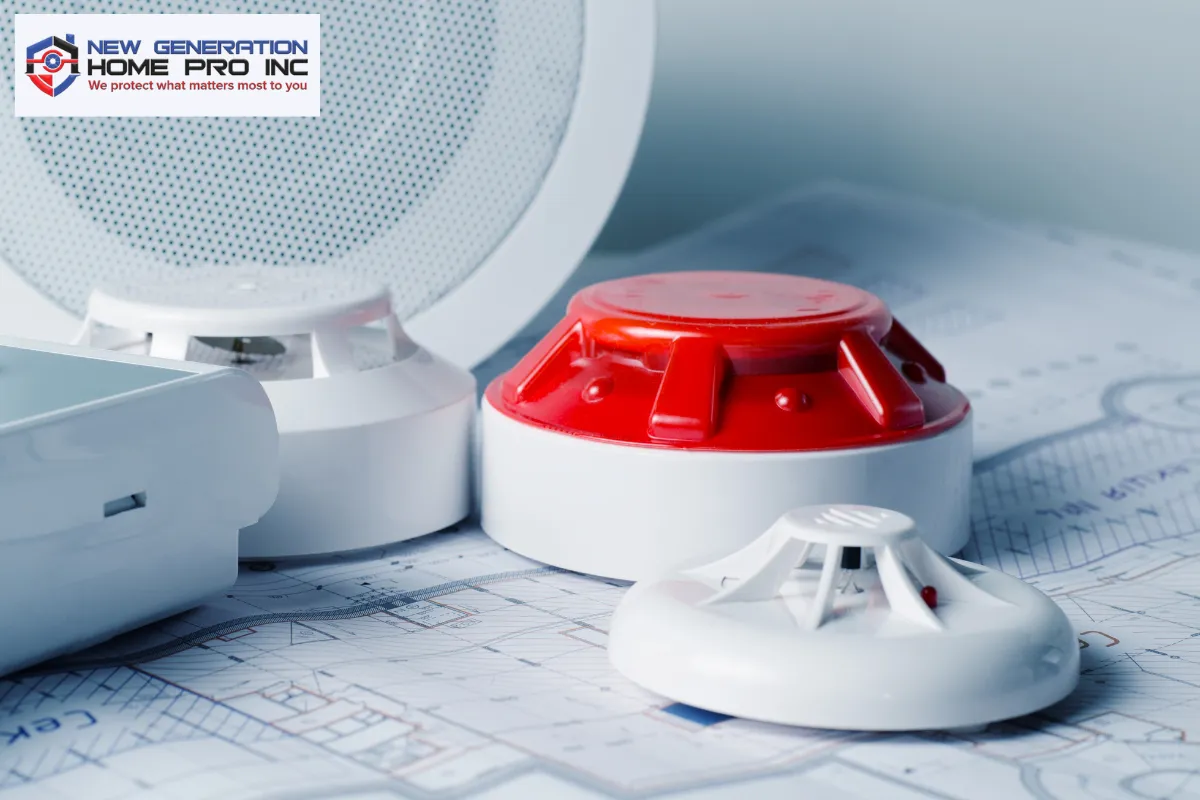
The features and tools you choose are what make your system great. Here’s a look at what you’ll probably need:
Key Features and Components
- Control panel: This is the brain of your system. It’s how you arm/disarm everything.
- Window sensors & entry sensors: Alert you if a door or window opens.
- Motion sensors: Detect movement inside your home.
- Security cameras: Watch live or saved video recordings of your property.
- Video doorbells: Let you see who’s at your door, even when you’re away.
- Environmental sensors: These include smoke alarms, carbon monoxide sensors, and flood sensors.
- Glass break sensors: Detect the sound of breaking windows.
Look for alarm system providers that offer a good range of options and additional features like unauthorized access alerts, smartphone control, and effective monitoring.
Step 4: Plan the Sensor & Camera Placement
Think carefully about where to place each device. This step affects how well your security system protects your home.
Ideal Placement Tips:
- Put motion detectors in hallways and near stairs
- Place window sensors on all accessible ground-floor windows
- Install security cameras above doors, driveways, and dark corners
- Keep video doorbells at eye level for clear video feed
- Avoid pointing cameras directly at lights or mirrors to preserve video quality
Also, follow any video surveillance laws in your state or region to avoid trouble.
Step 5: Prepare Your Home for Installation
Now that you know what’s going where, it’s time to get your space ready for the Security Setup.
Checklist:
- Make sure there’s a working power outlet near the main control panel
- Clean spots where you’ll place sensors and cameras
- Test your Wi-Fi network strength at every camera and sensor location
- Have a backup power source ready for when power outages happen
If you’re hiring a camera system installer, be ready to let them know where outlets and internet equipment are.
Step 6: Install or Schedule Your Setup
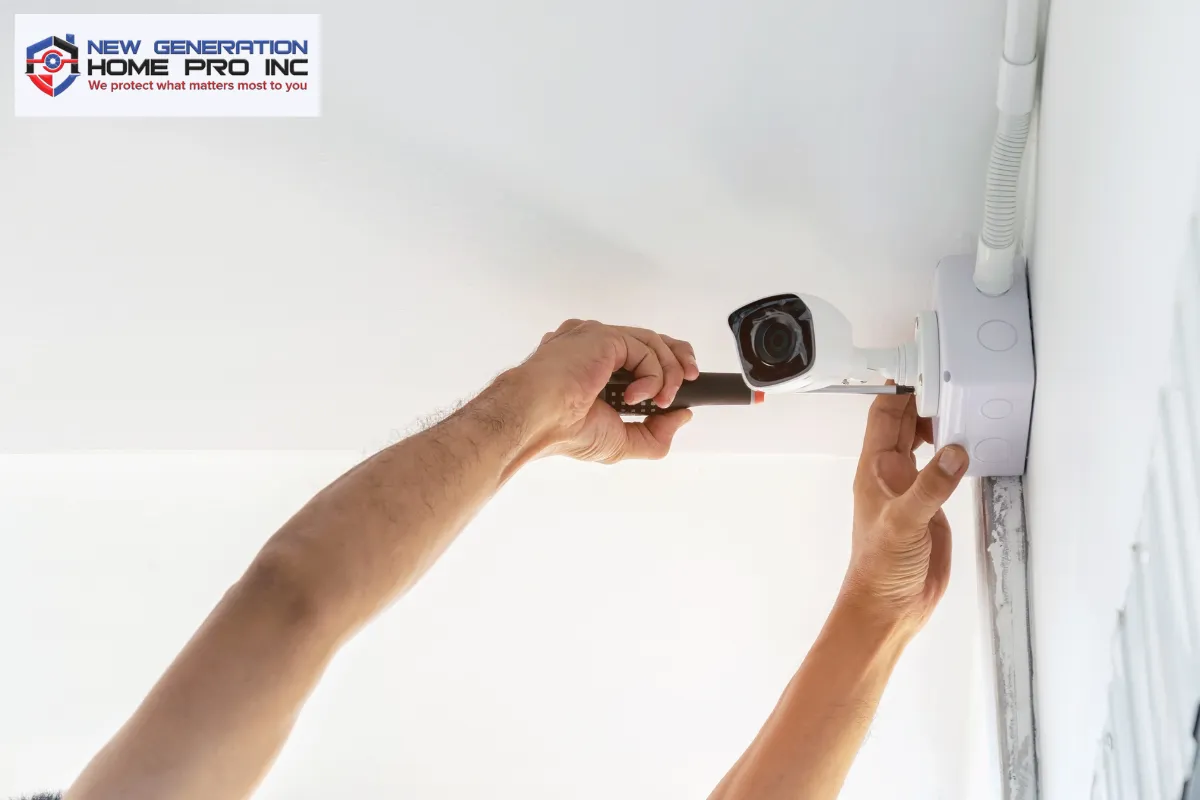
If you’re doing a DIY install, follow your system’s app or manual. Most home alarm systems today are simple to set up.
DIY Installation Process:
- Use step guidelines in the instructions or app
- Mount sensors and detectors at the marked spots
- Plug in the control panel and connect it to your Wi-Fi or cellular network
- Run system tests to make sure everything works
If you’ve chosen a security system installation service, ask the technician to walk you through how the system works when they finish.
Step 7: Configure, Test, and Secure Your System
Now it’s time to make sure your system works the way you want. This step is all about customizing the features, checking for any bugs, and protecting your system from any unauthorized access.
Configuration Tips:
- Connect everything to your smartphone for easy remote access
- Adjust motion sensors to ignore pets but detect people
- Set your alerts (push notifications, texts, or calls)
- Customize entry/exit delays so you have time to get in or out before the alarm activates
Test Everything:
- Walk around the house to trigger motion detectors and window sensors
- Open doors and windows to see if the audible alarm works
- View the video feed from your security cameras to confirm video quality
- Check if video recordings save correctly and if remote monitoring works as expected
Troubleshooting early will help you avoid false alarms later on.
Step 8: Set Up Monitoring and Smart Features
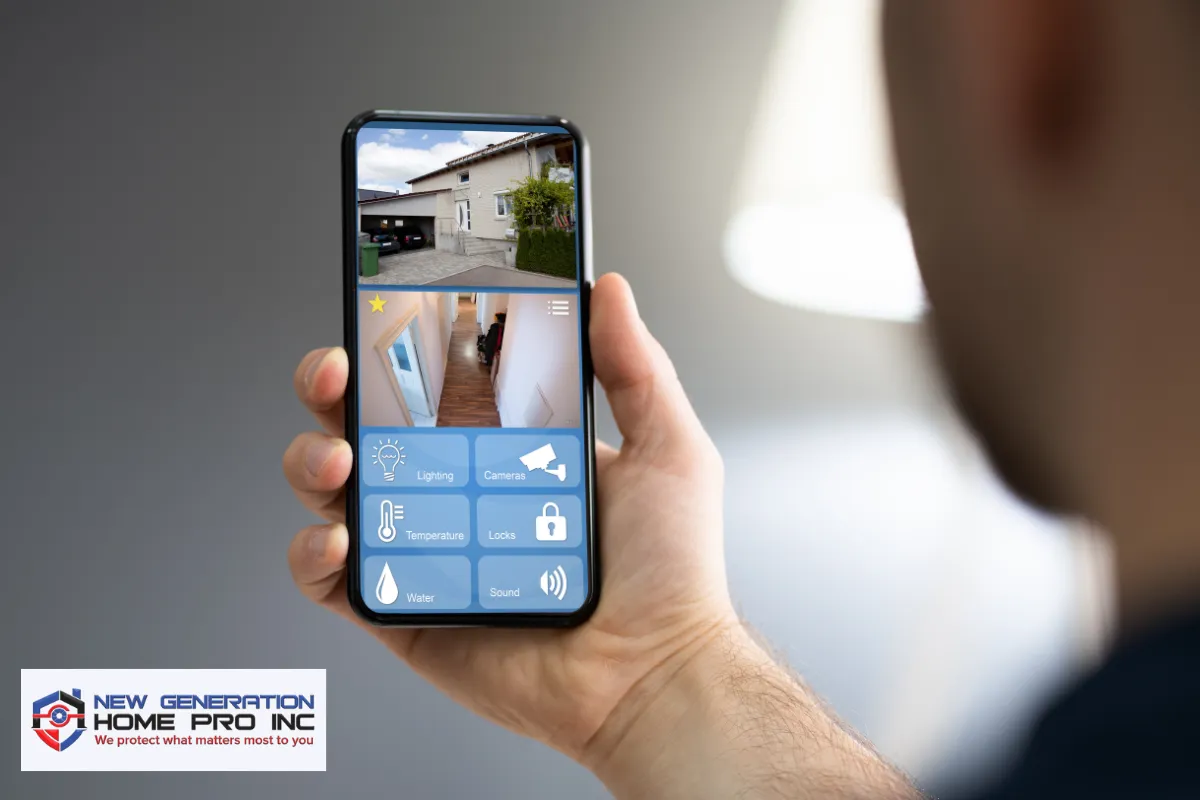
Your home security system becomes even more powerful when you add professional monitoring services or use smart tech for remote monitoring.
Monitoring Options:
- Cellular or internet-based monitoring sends alerts to your phone or to a central monitoring station
- Many systems include backup communication options so you’re covered even if the internet goes out
Smart Features to Activate:
- Link to your video doorbells, smart locks, or thermostats
- Set rules like: “If motion is detected after 10 p.m., turn on lights and send an alert”
- Use voice assistants like Alexa or Google to arm/disarm your system hands-free
This is where your system really starts to feel like a modern smart home security system.
Step 9: Maintain and Upgrade Your System
Once everything is working, don’t forget about upkeep! Just like a car, your security measures need regular attention to stay reliable.
Maintenance Tips:
- Test window sensors, motion detectors, and detectors monthly
- Keep security cameras and lenses clean for the best video surveillance
- Replace batteries on wireless sensors as needed
- Check for software updates in your security camera systems or app
- Keep your network secure with strong passwords and up-to-date routers
And if your family grows or you get a pet, you might need additional sensors or to adjust your system’s settings.
Smart Home Safety: Stay Ahead of Threats

Staying protected isn’t a one-time task. Use these tips to keep your home safer over time:
- Install backup power sources like battery packs for key devices
- Regularly review video surveillance to track neighborhood activity
- Add carbon monoxide sensors, smoke alarms, or a flood sensor if you haven’t already
- Review video surveillance laws if you move or install new outdoor cameras
- Upgrade to advanced features when new ones become available
This is how you make sure your security setup keeps bringing you that peace of mind.
Ready, Set, Secure: Make Every Step Count
Installing a home security system is one of the best things you can do to protect your family and belongings. Whether you go the DIY route or hire a security system installation service, following these step guidelines will make sure your system is ready to go. With the right features, proper placement, and consistent monitoring, your home can enjoy better coverage, faster alerts, and a strong level of security. You’ll feel safer every time you step out the door-and that’s what true peace of mind is all about. If you’re planning your first Security Setup, take it one step at a time, follow this step guide, and enjoy a more secure home with the help of modern home alarm systems and security camera systems.
Conroe Security System Installation Service – New Generation Home Pro Inc
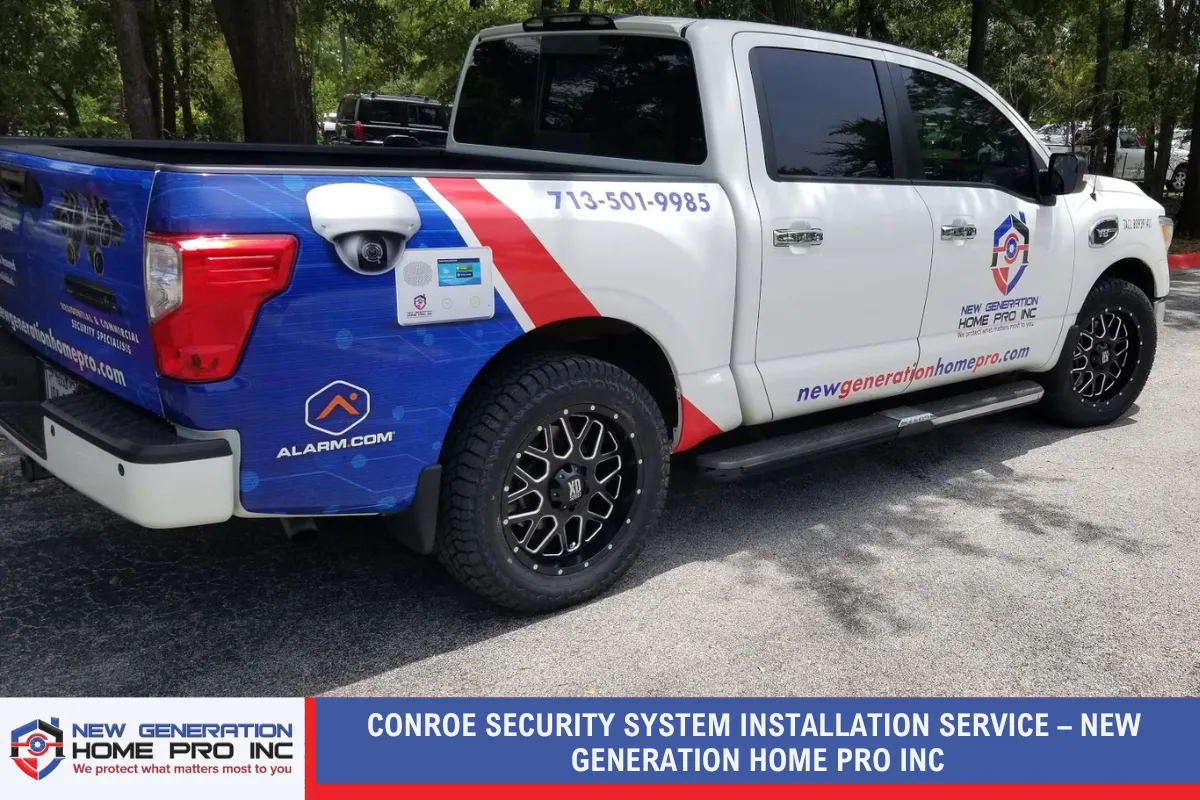
Looking for a reliable security system installation service in Conroe, Texas? At New Generation Home Pro Inc, we provide expert solutions for home alarm systems, security cameras, and full home security system setups. Whether you need a trusted camera system installer or help with home security alarms, we bring top-tier protection with the latest technology. Our licensed team ensures professional installation, dependable service, and advanced security measures to keep your family safe. Serving Conroe and surrounding areas, we’re your go-to security camera installer for peace of mind. Call (936) 205-2735 today or fill out our contact form to schedule your free consultation. Your security starts with the pros!
Frequently Asked Questions – Security System Installation Guide
What are the best places to install security cameras?
The best places to install security devices are those that offer optimal coverage of key areas. These include entry points, high-traffic zones, and areas with valuable items. Strategic device locations are critical for comprehensive home security system performance. Top locations to install security cameras:
- Front door – 34% of burglars enter through the front.
- Back door – Often less visible, making it a common point for unauthorized entry.
- Garage – To monitor tools, cars, and the garage door.
- Ground-floor windows – Ideal for detecting unusual activity and break-ins.
- Hallways and stairs – Key motion detection zones indoors.
- Living rooms – Use Indoor cameras for constant surveillance and to monitor smart devices.
- Driveways and yards – For long-range security and early alerts.
Tips:
- Use wireless cameras with strong signal strength for outdoor zones.
- Avoid Blind Spots by checking image quality and night vision.
- Connect cameras to a smartphone app for real-time notifications.
Placing security products in these strategic locations provides an extra layer of security and helps monitor suspicious activity effectively.
Do I need a permit to install a home security system?
Whether or not you need a permit depends on your location and the types of security systems you install. Many cities and counties require permits if your system includes burglar alarms connected to emergency responders. Key points:
- Permit requirements usually apply to monitored systems that can contact police or fire departments.
- Self-monitored systems often don’t require permits.
- You may need to register your alarm system to avoid fines for false alarms.
- Check with your local municipality or county office for exact rules.
In most cases, if you’re using wireless systems with mobile alerts or smart home integration, a permit might not be necessary. But it’s still wise to verify with your city. For professional services, many companies handle permit paperwork as part of the setup process.
How much does a basic home security system cost?
The security system installation cost for a basic system can vary depending on the brand, features, and installation type. Typical price ranges:
- DIY wireless systems: $150 to $400
- Professional installation: $300 to $1,000+
- Monthly monitoring fees: $10 to $60
Basic systems usually include:
- A control panel or smartphone app
- A few security system components like motion detectors or carbon monoxide detectors
- Mobile app access with real-time alerts
If you want additional services like cloud video storage, smart home technology, or 24/7 professional monitoring, the cost will increase. Many homeowners choose self-monitored systems for cost savings, while others invest in comprehensive coverage and advanced technology for peace of mind knowing their home is protected day and night.
Can I install a security system in a rental property?
Yes, renters can install modern home security systems using non-invasive methods. Many wireless devices are renter-friendly and avoid drilling or hardwiring. Tips for renters:
- Use adhesive strips for installing Indoor cameras, window sensors, and motion detectors.
- Choose wireless systems with easy smartphone app access.
- Opt for smart home devices that support smart home integration with platforms like Google Assistant.
- Avoid wired systems that need permanent fixtures or Ethernet cables.
Always check your lease agreement and get landlord permission. Portable systems that offer ease of installation, smart technology, and mobile alerts are perfect for renters wanting enhanced security without breaking lease terms.
How do I avoid false alarms?
False alarms are one of the most common issues in both DIY and professionally installed systems. Avoiding them protects your reputation with emergency services and keeps your system reliable. Best practices:
- Adjust sensitivity settings on motion detectors to ignore pets and small movements.
- Test your setup process to ensure proper installation of all essential components.
- Educate family members and guests on how to use the system properly.
- Set clear access control using your smartphone app or mobile app.
- Keep up with regular maintenance and regular firmware updates.
If your system is connected to a central location or professional services, too many false alarms could lead to fines. Smart motion detection settings and high-quality security products help reduce mistakes.
Is professional monitoring worth it?
Professional services offer an added safety net by giving you 24/7 oversight. When alarms go off, trained operators at a central location verify suspicious activity and alert emergency services. Advantages:
- Faster emergency response for carbon monoxide detectors, smoke detectors, and burglar alarms
- Real-time alerts and mobile notifications
- Comprehensive guide for setup and troubleshooting
Consider professional monitoring if:
- You travel often or leave your home unattended
- You want seamless integration with other smart devices
- You want help managing connectivity issues or device locations
While there’s a monthly fee, it offers peace of mind knowing someone is always watching your home-even when you’re not.
How does my security system work during power or internet outages?
Modern systems have built-in protections for power outages and internet access issues. Key features to look for:
- Backup batteries that power your system for 12-24 hours
- Cellular backup for network connectivity when Wi-Fi fails
- Smart home technology that uses both WiFi network and cellular signals
Wired systems may shut down without electrical outlet access unless they include a backup power source. Wireless systems often offer backup communication options, ensuring continued real-time alerts even during outages. Make sure to test your system regularly and replace backup batteries during maintenance properties checks.
Can I upgrade or expand my system later?
Absolutely! One of the benefits of smart home devices and modern systems is their flexibility. Expandable components:
- Add additional components like IP cameras, carbon monoxide detectors, or smart lighting
- Upgrade to higher image quality with color night vision
- Add access control or advanced technology like facial recognition
Things to consider:
- Ensure your system supports a wide range of add-ons
- Maintain adequate lighting to enhance night vision
- Regularly check for firmware updates to unlock new features
Most security system components connect easily via your mobile app, making upgrades part of a smooth and scalable setup process.
Read Discover Conroe, Texas: The Best Things to Do, Eat, and Explore in This Growing City

